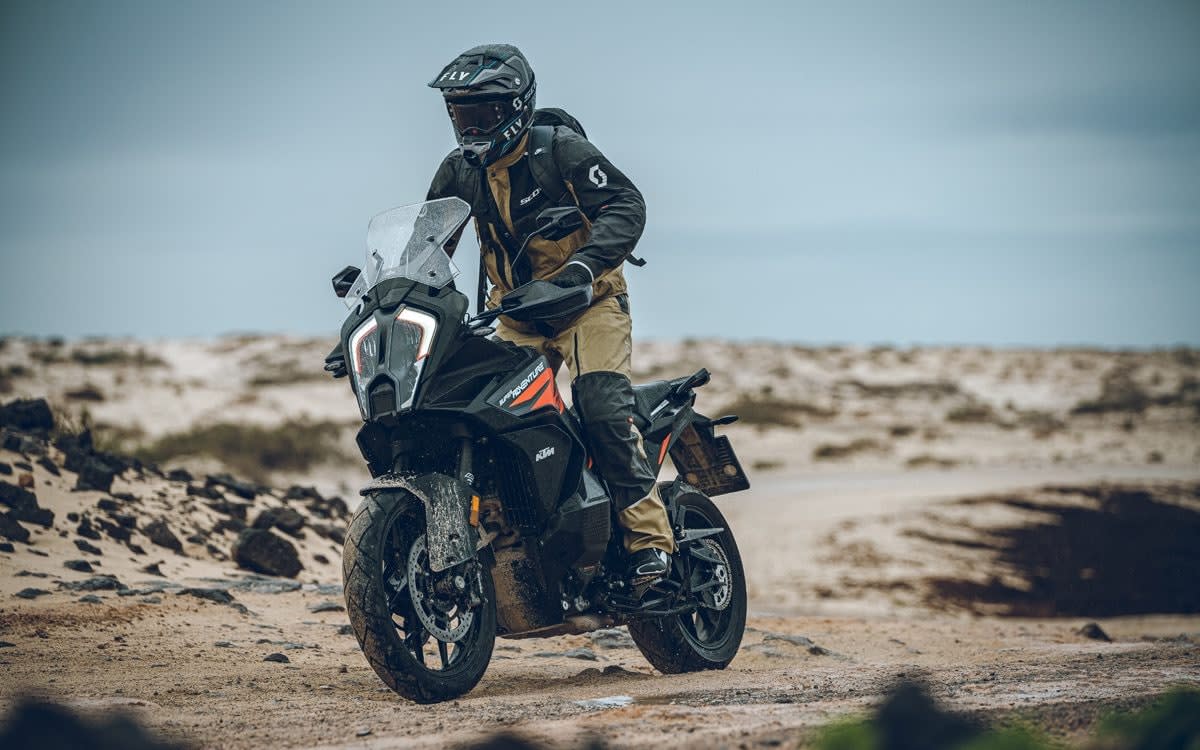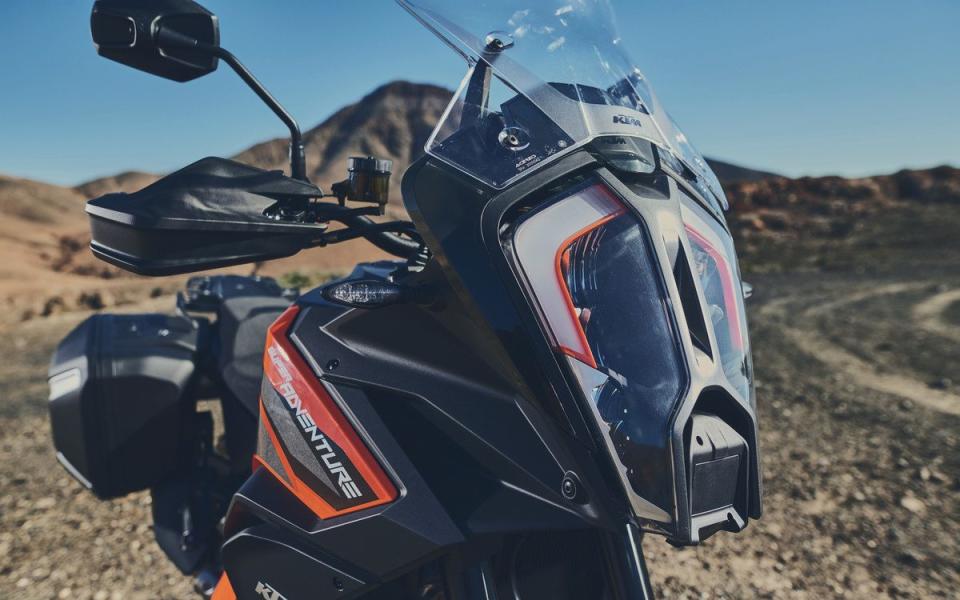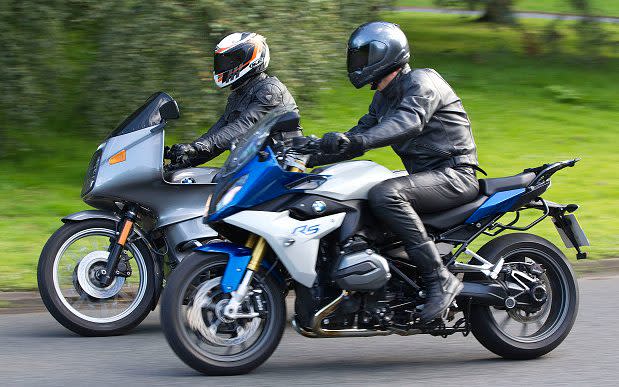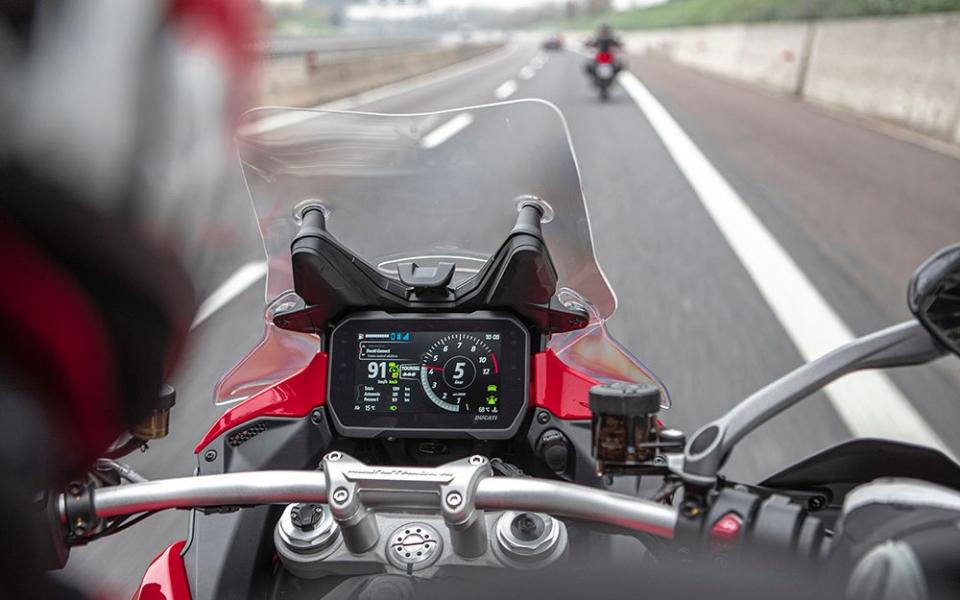How car-like Adaptive Cruise Control makes long motorcycle journeys safer

The way to ride a motorcycle on major roads could be changing with the growing application of car-type adaptive cruise control to a larger selection of adventure, touring and travel bikes.
Austrian manufacturer KTM is the first to include adaptive cruise control (abbreviated to ACC) as standard, on its 2021 model year 1290 Super Adventure S. The technology has already surfaced on touring bikes such as BMW’s 2021 R 1250 RT, launched last October, and is an optional extra on Ducati’s rated new Multistrada V4 tourer.
While regular cruise control is an accepted spec for large capacity and costly vehicles, the evolution of the software and hardware has made substantial, mundane journeys less of chore, especially as it is now feeding into the more dynamic adventure segment. Like an SUV in the car world, this type of machine has a degree of off-road ability in tandem with long-distance prowess on paved surfaces.
The adventure bikes represent a vibrant part of the motorcycle market, with sales doubling since the middle of the previous decade and topping 100,000 by 2019. Products from the likes of BMW, KTM, Honda, Yamaha, Ducati and Triumph are expensive but also lead the way in the adoption of practical technology.

How is ACC shifting the game? While negotiating the rain and wind around the narrow, bumpy asphalt of Fuerteventura for the recent KTM 1290 launch, ACC blew away a lot of the monotony associated with perfunctory riding in traffic and distance-covering.
How it works
It works thanks to a sophisticated front sensor with selectable speed and distance settings (all selected via an intuitive handlebar switch) to moving vehicles ahead. On the 1290 Super Adventure S it kicks in from 18mph and second gear all the way up to 95mph and includes an “overtaking assist” mode.
It took quite a few miles and junctions to place trust in the ACC when approaching roundabouts and exits but the bike was quickly braking smoothly and accelerating by itself, leaving me to only about appropriate gearchanges – something made even easier by KTM’s Quickshifter+ set-up (an element that is not part of the standard package).
Like BMW and Ducati, KTM has worked ceaselessly with electronics specialists Bosch to refine its first ACC. At the core of the system is the six-axis sensor that initially debuted on the flagship 1290 Super Duke R naked bike in 2020.

The hardware collects and feeds constant information about the bike’s positioning, pitch and behaviour to not only influence the ACC but also the other technical assists or safety implementations such Cornering ABS, Motorcycle Stability Control and Traction Control. Together with semi-active suspension – now present on most leading adventure models – these bikes are intelligent and highly reactive.
Technology such as a six-axis sensor is part of the necessary kit that helps formalise the difference in ACC from cars and the extra dimensions involved with riding.
The difference between bike and car ssystems
“It’s very complicated technology,” said Adriaan Sinke, KTM’s head of product management. “In a car it is relatively easy because it’s stable and doesn’t lean. When the wheels turn you know in which direction the car is travelling. Lean angle doesn’t necessarily indicate this. It’s more complex.
“Motorcyclists ride differently, and in a group you are not always directly following the rider in front of you. You can be staggered. If a car system brakes aggressively then it is still going in the same direction whereas a bike has more at play and it’s easier to crash.

“So, factors like how much the bike can accelerate and decelerate and how aggressively you can react means it’s difficult to achieve. A lot of working has gone into the settings to make it where it is today. It is a big project.”
What about rival machines?
BMW publicised its Active Cruise Control last autumn with the R 1250 RT but it has yet to transfer to the all-conquering GS adventure range. These are the market-leading models that KTM is looking to attack thanks to more sporty and agile offerings that also “out-tech” the Boxer-engined 1250 GS.
A spokesman for BMW said: “The GS is already among the most technology-rich models on the market and while we can’t comment on future technology introductions, it remains BMW Motorrad’s commitment to provide class-leading technologies on its models.
“In recent years, BMW has led with introductions of other new technologies such as Dynamic ESA, Adaptive Headlight Technology, and integrated TFT Connectivity, and the company recently introduced Active Cruise Control on its best-selling R 1250 RT for 2021, having announced the new technology in June last year. The system can trace its roots back more than 20 years to when BMW first introduced the technology on its range-topping 7-Series Saloon.”

Ducati’s Multistrada V4 is not being left behind. The Italian company’s Bosch-developed Inertial Measurement Unit (IMU) sits between front and rear radar to deliver ACC and Blind Spot Detection; a handy warning aid that could eventually eradicate the trusty “lifesaver” over-the-shoulder glance before changing lanes.
Versatility is key
KTM’s vision was to pitch the 1290 Super Adventure S as a more comfortable, agile but still pioneering proposition; its new ergonomics and dual seat-height setting are the most immediate signs that the orange bikes are on the right path. The technical characteristics add further allure.

As with any motorcycle of this ilk the true test lies in the accumulation of miles but the Austrian unit aims for true versatility. The new version comes at a time when adventure biking is arguably more relevant than ever: the comparative isolation as a form of travel and discovering new locations and countries suddenly holds renewed appeal after the last 12 months.
Is adaptive cruise control worth it?
Some may question ACC’s worth and classify its inclusion as gimmicky, but in practice there is little doubt that it decreases the legwork (or perhaps ‘throttlework’) throughout a journey that could involve hundreds of miles. Now it is part of the spec sheets, it’ll probably stay.

Sinke said: “Unlike in our advertising brochures, in the real world I have to actually get to the mountain,” referencing KTM’s marketing emphasis towards ideal bikes for twisty hillside passes. “The best thing about ACC is that it actually makes the bike better. It’s a more fun travel motorcycle. You can ‘skip’ the boring parts.”
How much will this technology cost?
More tech means more money, naturally. The KTM 1290 Super Adventure 2 is priced just shy of £15,000. You’ll need up to another £3,000 to get a Ducati Multistrada with the full electronics kit, while the BMW GS starts at about £14,000 – and prices tend to climb rapidly due an enticing list of options.
At least the investment means some of the most advanced ideas and engineering we’ve seen yet on two wheels.
For new and used buying guides, tips and expert advice, visit our Advice section, or sign up to our newsletter here
To talk all things motoring with the Telegraph Cars team join the Telegraph Motoring Club Facebook group here

